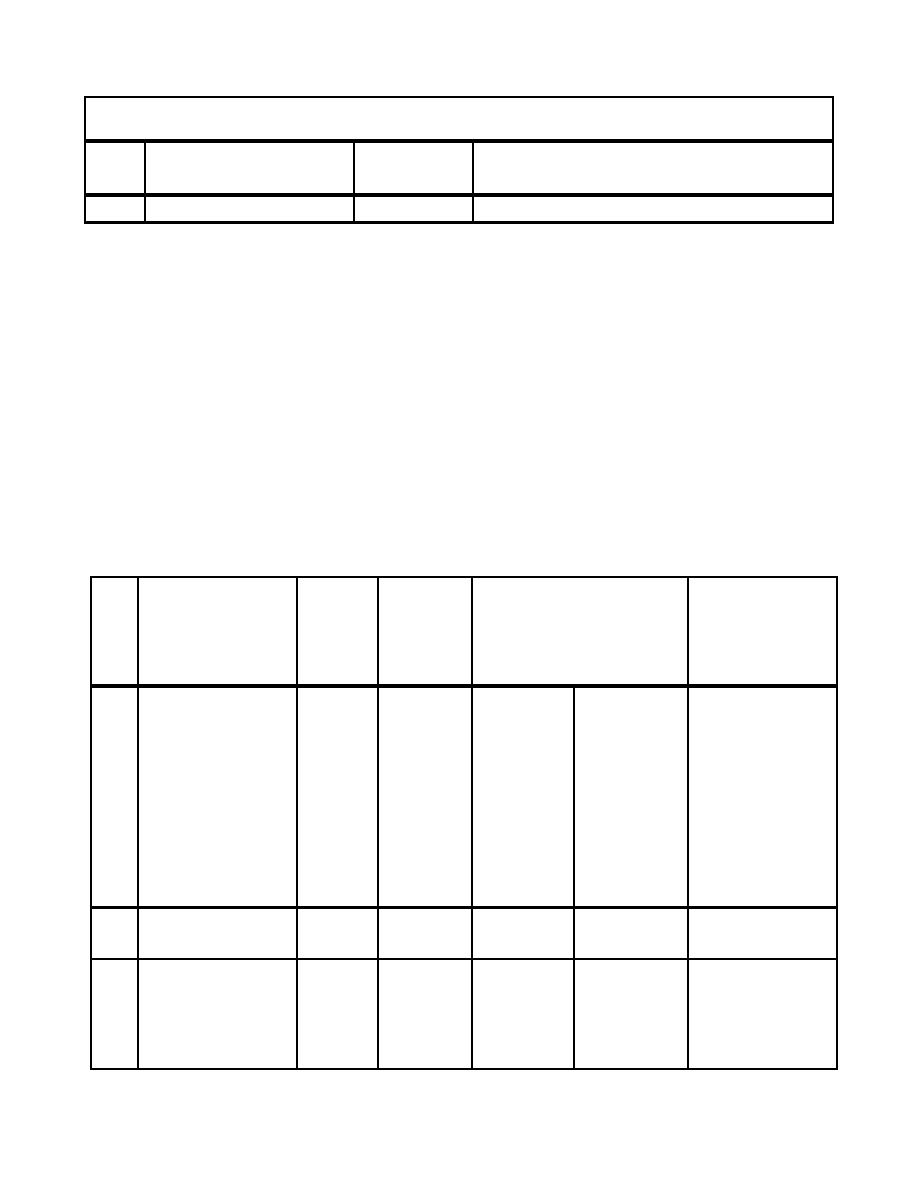
Chapter 4
Table 4.6. Rotary-Wing Runway and Landing Lane Clear Zone and Accident Potential Zone (APZ).
(See Notes 1 and 2.)
Item Description
Requirement
Remarks
No.
See Notes 2 and 3.
NOTES:
1. The clear zone area for rotary wing runways and landing lanes corresponds to the clear zone land use criteria for
fixed-wing airfields as defined in DoD AICUZ standards, and summarized in Attachment 4. The remainder of the
approach-departure zone corresponds to APZ I land use criteria similarly defined. APZ II criteria is not applicable
for rotary-wing aircraft.
2. Exceptions to these widths are permissible based on individual service analysis of highest accident potential area
for specific rotary-wing runway/landing lane use and acquisition constraints.
3. No grading requirements for APZ I.
4. Metric units apply to new airfield construction and where practical modification to existing airfields and heliports,
as discussed in paragraph 1.4.4.
5. The criteria in this manual are based on aircraft specific requirements and are not direct conversions from inch-
pound (English) dimensions. Inch-pound units are included only as a reference to the previous standard.
6. Airfield and heliport imaginary surfaces and safe wingtip clearance dimensions are shown as a direct conversion
from inch-pound to SI units.
Table 4.7. Rotary-Wing Imaginary Surface for VFR Approaches.
Helicopter
Runway
and
Landing
Item
Legend
Lane
No. Item Description
in Figures
Helipad
Remarks
Army does not
Air Force Air Force and
have VFR Rotary-
and Army Army VFR
Wing Runways or
VFR
Limited Use;
Landing Lanes.
Standard
Navy and
Marine
Corps
Standard
Helipad and
Hoverpoints
(see note 1)
A
91.44 m
91.44 m
45.72 m
Centered on the
1
Primary Surface
[300 ft]
[300 ft]
[150 ft]
GPI.
Width
Runway or landing
45.72 m
2
Primary Surface
A
Runway or
91.44 m
lane length plus
[150 ft]
Length
landing
[300 ft]
30.48 (100 ft) at
centered on
lane length centered on
each end for Navy
facility
plus 22.86
facility
and Marine Corps
m [75 ft] at
4-25


 Previous Page
Previous Page
